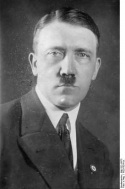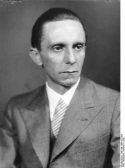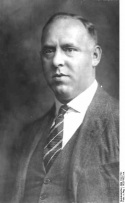Adolf Hitler
1889-1945
- Dictatorial Führer of the NSDAP
- Became Reichskanzler in 1933
- Bore the main responsibility for genocide and war
From the very start, Adolf Hitler was a staunch opponent of the Weimar Republic. From the beginning of the 1920s, he was heavily involved in völkisch, anti-Semitic groups, in which he gained more and more followers and founded the NSDAP. He then planned a march on Berlin, modelled on the march in Italy. However, his march failed miserably on 9 November 1923. He was let off easily, leaving prison after a short time. He then forced his party to stick to a strategy operating within the republic’s legal framework. Still, he worked tirelessly to dismantle the democracy completely. He managed to do so in the end thanks to his alliance with right-wing conservative groups who helped him become Reichskanzler in 1932. This plunged Germany in the darkest chapter of its history, with an unprecedented reign of terror striking anyone diverging from the Nazi norms. The party imposed Gleichschaltung, a Nazification process permeating all aspects of society. Unbridled racial fanaticism broke loose, with an unparalleled genocide committed against the Jews. In the end, the war ravaged the world, killing 50 million people. With his Reich collapsing, Hitler escaped responsibility by committing suicide in 1945.






